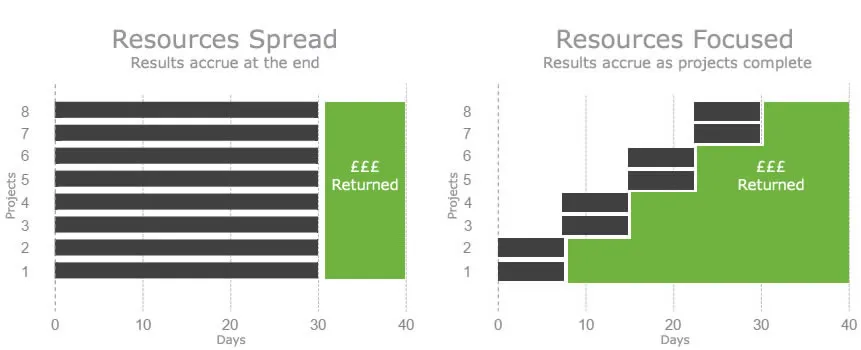Most of us do one of two things when we have a lot to complete in a finite amount of time: We try to multitask and do everything at once, or we batch the work by doing the same element of each task at once.
This feels efficient; we’re making progress on each of our tasks. However, doing it in this way could actually take us longer, particularly if we are working as part of a team.
Picture this
Imagine, for example, you and three other members of your team are working on four projects and you each have different tasks to complete. You may be working on task one, but your colleagues may not, which holds up your progress as you wait for their expertise. They may face similar delays to their projects as they wait for you to finish your task.
Add in to this other complexities: If we’ve not looked at a project for a couple of days it may take us a while to get back into the swing of it. Plus, if there are four projects you each may have one that you favour above the others – either because you enjoy the work more or because you’re gunning for the outcome – you’ll naturally dedicate more time to that at the expense of your other projects.
And your three colleagues will do the same. That means your four projects will all take longer than they could have.
Little’s Law

The alternative is that you take on less in order to do more. It’s based on a theory called Little’s Law which suggests that the speed of work through a process is proportional to the number of things being worked on simultaneously. If you have four projects to work on, it is more effective to have the whole team work on each project consecutively. This focuses the resources and means you won’t have to wait so long for skills or expertise.
However, it takes careful management. If each project is a pet-project of a particular member of your team, there needs to be the trust there that all projects will go ahead. All members of the team need to be dedicated to each project with the enthusiasm as though it were their own.
Resources focused
This alternative approach focuses the resources where they are needed and each person has more time to dedicate as they aren’t working on three other projects. Each project is completed more quickly and, as a result, the same number of projects are started and completed in the same time frame. However, the difference is that as each project is completed, the returns start to come into the company. In a traditional approach, all projects would be completed at around the same time so this would not occur.
